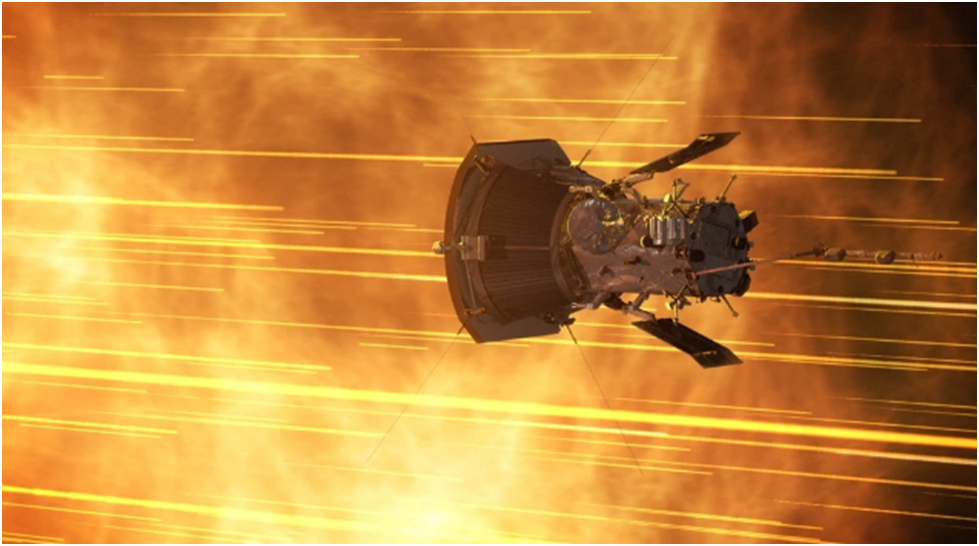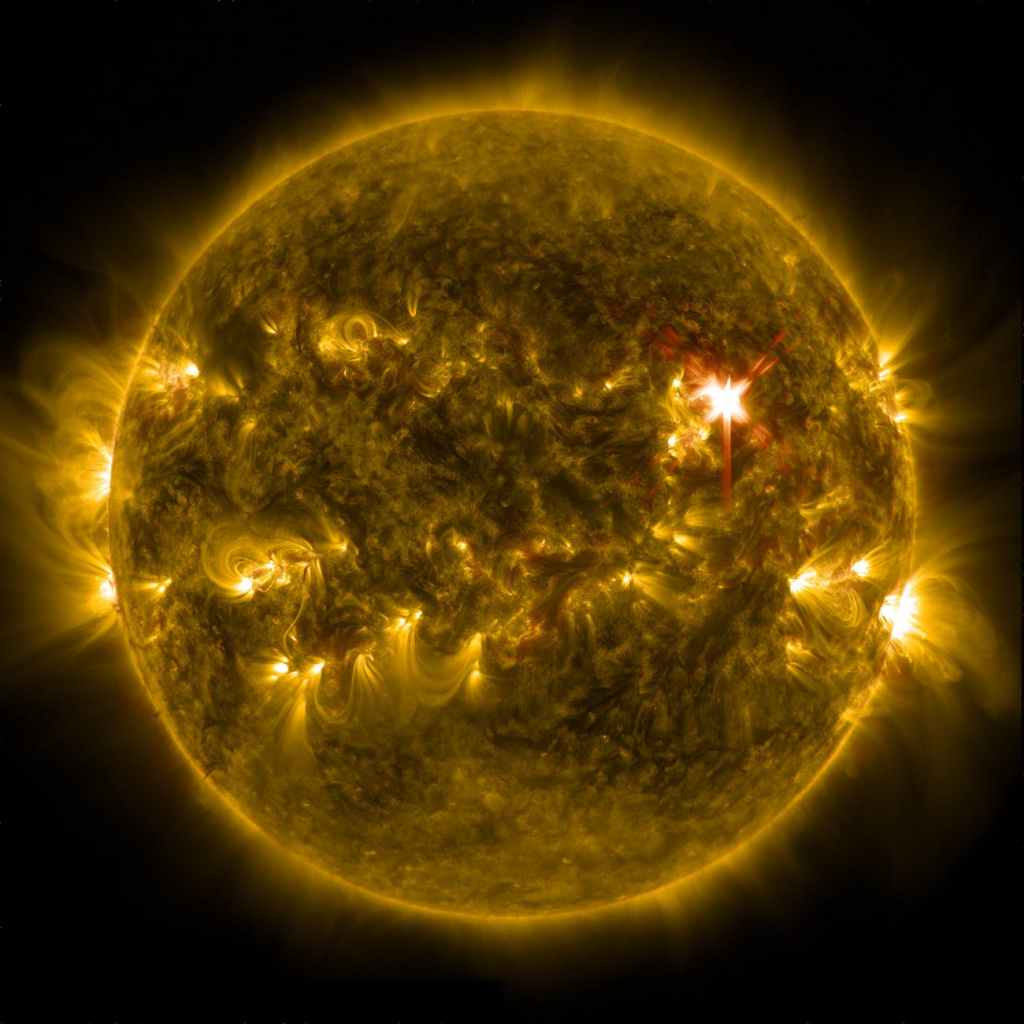Sun- our source of life, without this bright dot no creature would ever appear on Earth, let alone humans. Who knows, maybe without it the Earth would be just a rocky, cold ball in the space? In this article I will try to tell the story of understanding the essence of the functioning of the Sun and our view of it.
In ancient times, the Sun was a (differently perceived) god. In Norse mythology, Sol was the sister of the Moon. Among the Romans, Sol even had a place in the calendar of holidays. On the other hand, in Egypt temples were erected in honor of the sun god. Currently, the light of our day star is associated with warmer seasons, and the holidays awaited by students…
The first naked eye observations of the Sun are said to have been made by Chinese astronomers around 28 BC. The Greek astronomer Aristarchus of Samos recognized that the Sun was larger than the Earth, which was one of the first true theories. In 1607, an outstanding astronomer, J. Kepler, saw a spot on the surface of the Sun, he thought it was Mercury, but as it turned out later – he registered a sunspot! On the other hand, mention of the first telescopic observations can be found around 1610, when the first telescope was invented. The eminent Italian astronomer Galileo introduced equipment that revolutionized astronomy. During that period of time, our star was also being observed by Thomas Harriot, Cristoph Schreinner and many other astronomers. In 1843, the German scientist William Herschel noticed that the presence of spots was not accidental and there were especially more of them every 11 years – the first theory about the so-called solar cycles.
Later references to solar cycles were confirmed by Samuel Heinrich Schwabe when he searched for a planet within the orbit of Mercury by making careful drawings of the Sun’s disk every day. Finally, the theory was confirmed by the Swiss astronomer Rudolf Wolf, setting the period at 11 years. It is worth adding that the first few decades of solar observations were carried out during the so-called Maunder minimum – a period with a clear decrease in the number of sunspots, probably related to the cooling of the Earth’s climate.

Later, it was thought of introducing the measurement of solar activity. The first one, in 1848, was developed by the aforementioned R. Wolf. It was called the Wolf number and is still used today. It consists in multiplying the number of groups by 10 and adding up all visible spots. The second most popular classification was introduced in 1973 by Patrick S. Mclntosh. It is a modified Zurich classification. It consists of three letters – the first describes the type and size of the group. The second describes the biggest spot. The third – the last, tells us about the surroundings of the group, its features. Eight years later, in 1981, a solar observer, K. I. Malde, decided to create his Classification Value (CV), which was a numerical representation of the McIntosh classification. Even more classifications of the Sun have been created, such as the intensity of photospheric flares (F). All of them are now used as a benchmark for amateur solar astronomy and are available to people all over the world.
As the space industry developed, the first probes were sent into space to image the sun. The first such probe was sent by the United States – Pioneer 5, starting a series of these probes in 1960. The craft first recorded an eruption on our daytime star. The next interesting mission was launched in 1990. Ulysses, because we are talking about her, provided us with information, e.g. about the solar wind or about the magnetic field of the sun, which – as it turned out – affects the solar system in a more complex way than we thought. In 1995, the SOHO (Solar and Heliospheric Observatory) probe was launched towards the day star – which aimed to study the outer layers of the sun and the solar wind. The ship is still operational and current images can be received from it.

The last probe I will describe is the Parker Solar Probe, which broke all records. After many flybys of the planet Venus, the spacecraft entered the sun’s corona (outermost layer) as the first craft ever. The mission is called “First Touch of the Sun”. The probe also made history as the fastest man-made ship, when during one of its flights it reached a speed of 586,864 km/h!
What’s next?
Regarding solar telescopes, 3 new constructions are planned. The first, the European Solar Telescope (EST), will have a 4-meter aperture and will be located in the Canary Islands (Spain). The other, the Chinese Giant Solar Telescope (CGST), will be 5-8 meters in diameter. The last proposed solar telescope is the National Large Solar Telescope, which will be built near the village of Merak, village in Ladakh (India) to study the microscopic structure of the Sun.

When it comes to space probes studying the Sun, then there are two probes. The first, organized by the European Space Agency (ESA), will study space weather and our unpredictable sun. The name of this probe, Vigil, was chosen in an unusual contest in 2021 where the public could submit their own names for this probe. The planned launch is scheduled for the end of 2029. The second mission, Aditya-L1, is a probe designed by Indian Space Agency, ISRO to study the sun’s atmosphere. The launch is planned for this year. It’s also India’s first mission to study the Sun.
And so we learned the history of our gaze on this bright dot. Appreciate it, leave the house and watch the sunset or sunrise, then think about the whole story… the story of the creator of life on our little blue dot!!
Mission Links
European Solar Telescope (EST):- https://est-east.eu/est-project
Vigil Probe:- https://www.esa.int/Space_Safety/Vigil
Aditya-L1:- https://www.isro.gov.in/Aditya_L1.html
The National Large Solar Telescope (India):- https://www.iiap.res.in/nlst/?q=home
About Author
Milena Niemczyk is an amateur astronomer and astrophotographer from Poland who loves to
gaze at the stars, moon and mostly observing the Sun. She joined Astronomia Oggi on August
1st, 2023
Archive
Archiving is one of the main features of our website. We take pride in supporting the rights that an individual have over their own work that includes videos, images, article, audios, etc.That’s why, this articles has been archived on the Internet Archive to keep this author’s work safe. Check here
